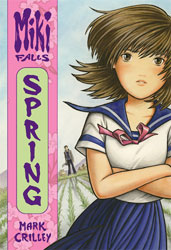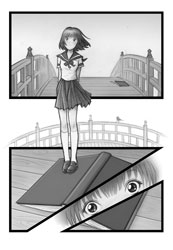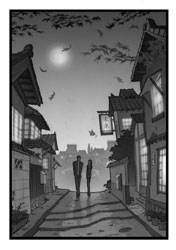I’m off to work early today, but I’ll be back later with more news and reviews. In the meantime, here are some highlights:
ICv2 has a three part interview with Tokyopop publisher Mike Kiley in which he talks about the popularity of global manga, Tokyopop’s expansion into digital media, and the predicted effect of Viz’s Naruto binge (“I’m optimistic that it will lead to a rising tide lifts all boats situation”—well, what else is he going to say?)
The Associated Press takes a look at cell phone comics, including Tokyopop manga. (Via ComiPress.)
UK manga publishers warn booksellers that if they’re not shelving a lot of manga, they may be missing out on sales. True, but a tad self-serving.
New blog alert: Comic Gays is a linkblog, a la When Fangirls Attack, but covering strictly GLBT issues in comics, and powered by Dorian Wright of postmodernbarney.com, so you know it’s good.
The Wall Street Journal discovers that girls read comics, leading them to write a weirdly hybrid article about manga and Minx. (Via The Beat, where sarcasm abounds in the comments.)
A manga artist visualizes a protein for the cover of the biology journal Cell.
Reviews: About Heroes lets loose another flurry of short reviews. At PopCultureShock, Erin F. takes a look at two series that may never end, Boys of Summer and Peach Girl: Sae’s Story. Connie reviews Don’t Say Anymore Darling, vol. 4 of Stray Little Devil, and vols. 1 and 2 of Adolf at Slightly Biased Manga. Active Anime’s Christopher Seaman reviews vol. 1 of St. Lunatic High School and vol. 5 of Chibi Vampire. Brian Henson checks out vol. 1 of The Empty Empire at Anime on DVD.


